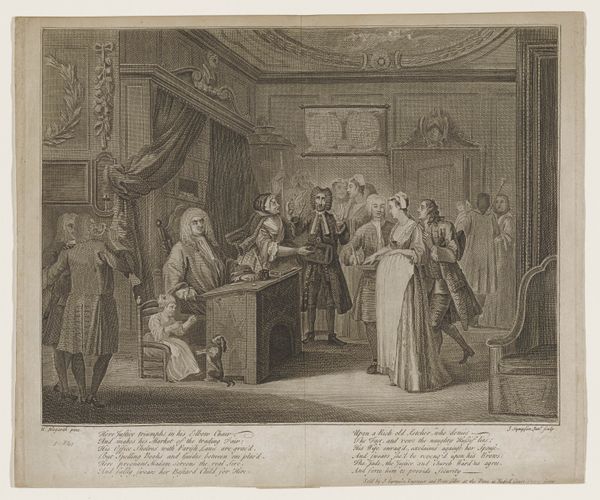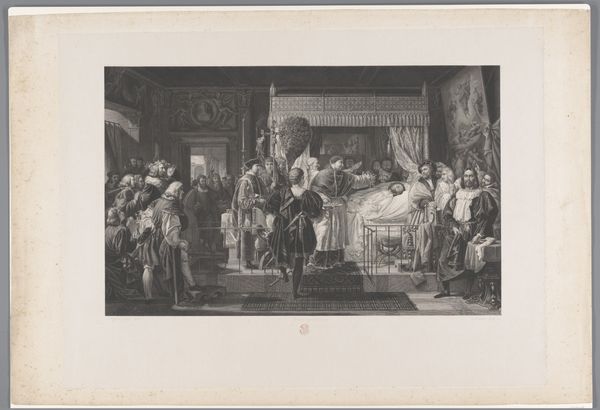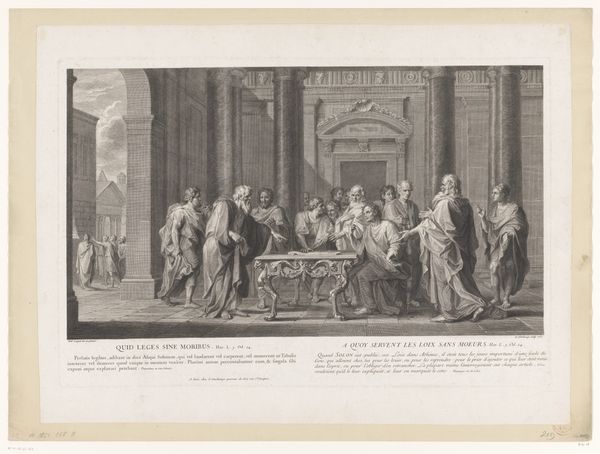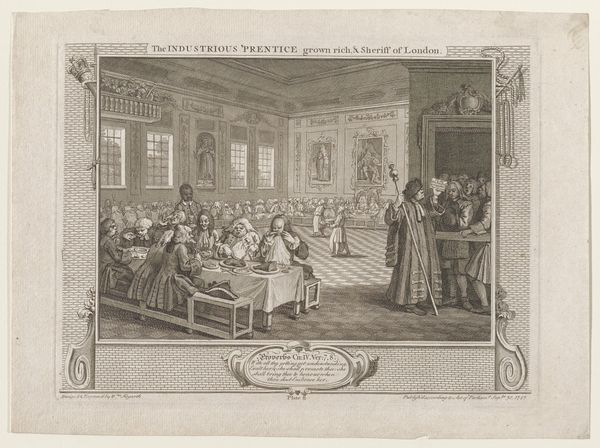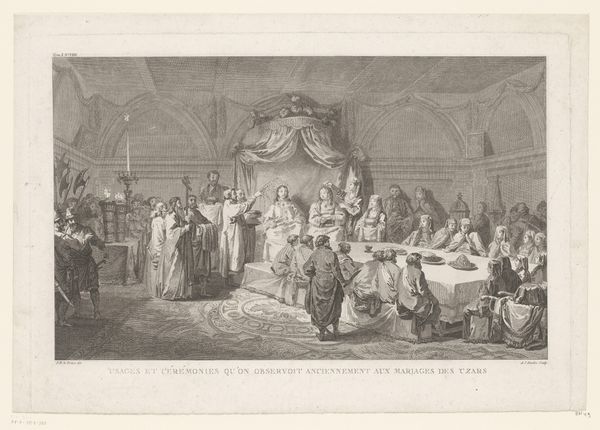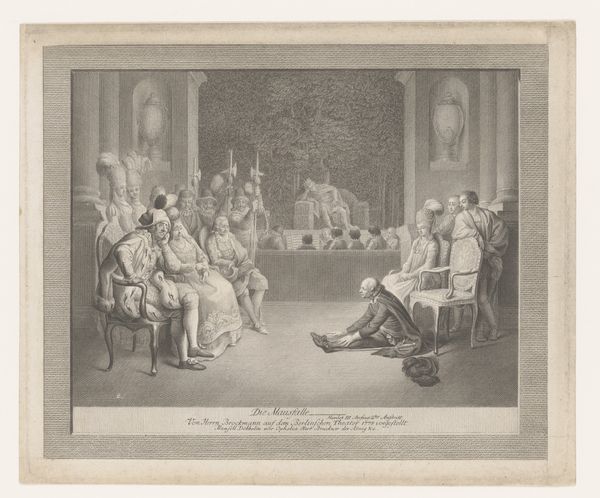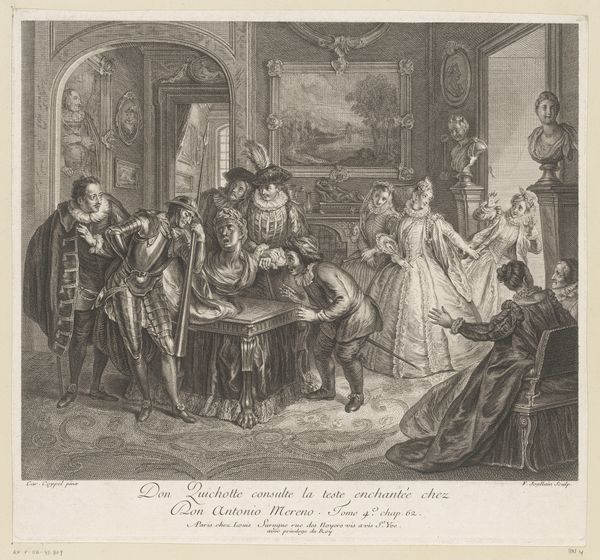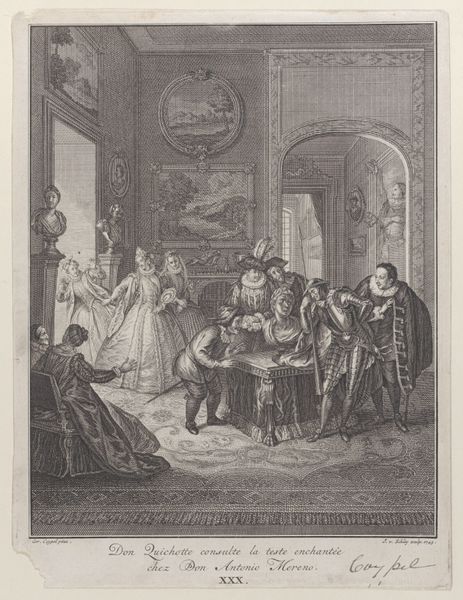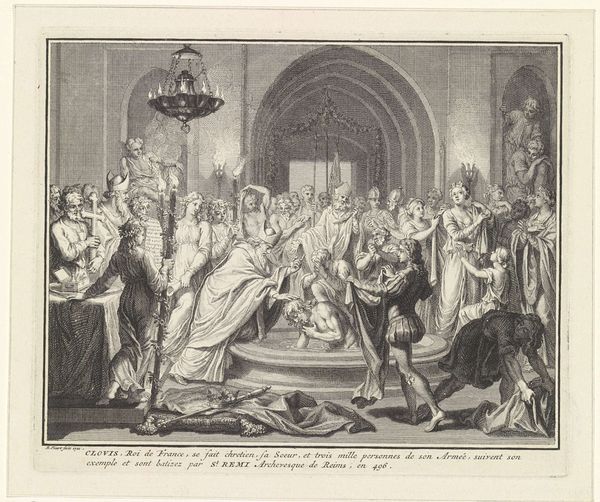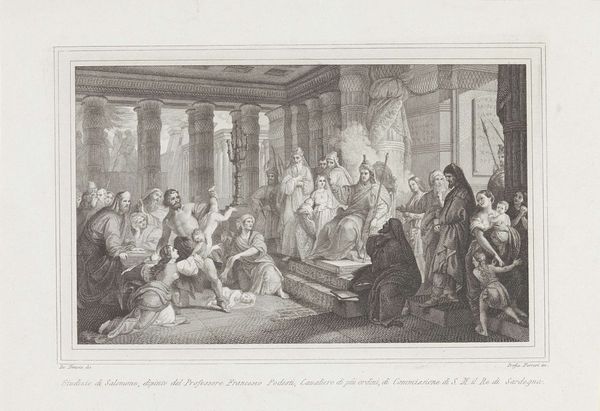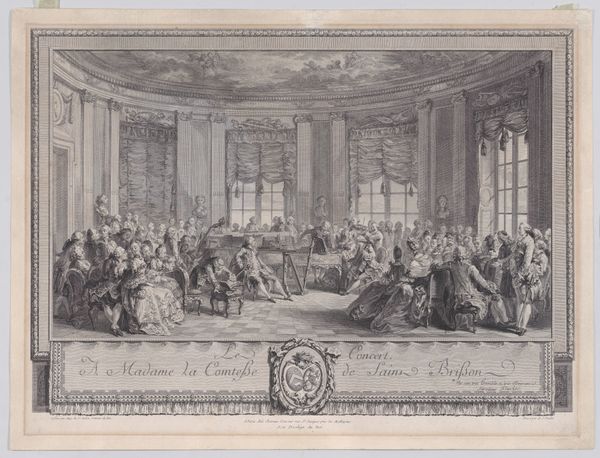
drawing, print, engraving
#
drawing
#
baroque
# print
#
figuration
#
men
#
history-painting
#
engraving
Dimensions: Sheet: 13 7/8 × 15 9/16 in. (35.3 × 39.5 cm)
Copyright: Public Domain
Curator: This engraving, created by Jan Muller between 1593 and 1603, is entitled "Belshazzar's Feast." It captures a pivotal scene laden with religious and political significance, and it’s currently housed at the Metropolitan Museum of Art. Editor: It’s incredibly dense, visually! My eye is immediately drawn to the dramatically lit figures—a scene almost overflowing with a sense of impending doom. It looks like everyone is celebrating and suddenly everything changed because of that eerie ghostly hand writing on the wall. Curator: Exactly. Muller masterfully depicts the moment from the Book of Daniel, where Belshazzar, the Babylonian king, profanes the sacred vessels from the Jewish Temple. Considering this in the context of the period, one can't overlook how European conflicts and the fraught relationships between Protestants and Catholics inflected readings of scripture. Who held the true interpretation? Whose symbols were legitimate? Editor: Yes, you see these kinds of feasting scenes throughout history symbolizing corruption, don't you? And look how Muller contrasts the chaotic energy of the feast with the calm, almost ethereal, glow surrounding the hand. The sharp details are a great metaphor of Baroque dynamism and revelation that’s present in that religious and sociopolitical anxiety you're referencing. Curator: And what does the iconography surrounding the feast reveal? Look closely at those chalices and ornate serving vessels. What meaning can you glean? What function did they serve to audiences then and now? The very act of displaying such symbols – during the Counter-Reformation – held inherent dangers for some. Editor: True. The choice to depict that specific moment with that light implies punishment is imminent – Muller understood the symbolic weight those objects would carry. This single feast contains messages about power, sacrilege, and divine retribution still relevant for us. Curator: This image is ripe for exploring such themes. What histories are embedded in visual representations of such events, and how are they echoed across different faiths? That to me remains compelling. Editor: Indeed, and what continuities and ruptures do we perceive in the use of symbols across time and cultures—and why? That’s why I find "Belshazzar's Feast" perpetually fascinating.
Comments
No comments
Be the first to comment and join the conversation on the ultimate creative platform.
